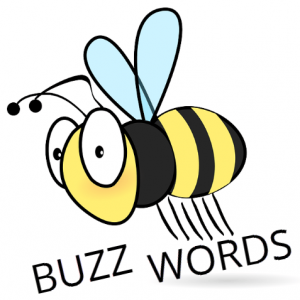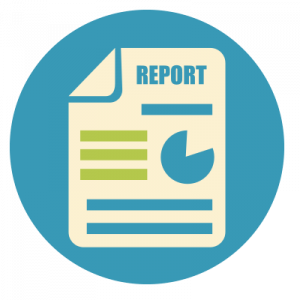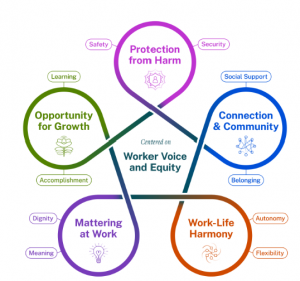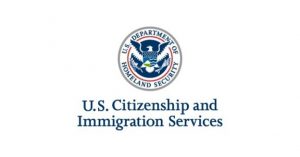 Workplace Buzzwords, what do they mean?
Workplace Buzzwords, what do they mean?
The buzzwords of late 2022… Quiet quitting, fast firing, zoom out, fast quitting, quiet fleecing, loud quitting, quiet firing…
In August, the Wall Street Journal spotted an unassuming TikTok in the wild and introduced the concept of “quiet quitting” to the masses. After the video was cited by the paper, the quiet-quitting rocket ship ignited its afterburners and went full supernova, and it still hasn’t come back to Earth.
Suddenly, quiet quitting—when workers disengage from their jobs, but continue to do the bare minimum—is trending like a YouTuber’s boxing match: CEOs are worried about it, HR leaders are scrambling to address it, and at least half of US workers admit to falling into the quiet quitting camp. As a reporter who covers HR, I’ve been bombarded with emails from publicists using quiet quitting as a springboard into other timely workplace trends, such as:
Loud quitting. Quitting…but IN ALL CAPS? According to one publicist’s recent email, this is when an employee lashes out by writing scathing company reviews online, probably with the intention of drawing negative attention for the employer.
Quiet firing. According to the management consultancy Team Building, this occurs “when management creates non-ideal work conditions to make an underperforming employee quit.” (Shh, but the Wall Street Journal tackled this one, too.)
Quiet fleecing. This refers to wage disparity between regular workers and top earners. As the Economic Policy Institute put it on Twitter: “Workers are more productive than ever, but their pay hasn’t kept pace while top 1% wages have skyrocketed.” (Of course, the widening wealth gap in the US isn’t a new thing, the same think tank is quick to point out.)
Fast quitting. Quitting, but perhaps with a pair of Guy Fieri’s trademark shades on? As Entrepreneur recently wrote, this occurs when “someone leaves their position before the one-year mark—something that was once seen as a standard amount of time to stay in a job.” (Millennials were branded “the job-hopping generation,” by Gallup in 2016, so, this is not a super recent development…)
Zoom out. Many have pointed out that quiet quitting is just a new name for doing what’s expected and nothing more. And the media hype amplifying this not-so-new trend can wind up overlooking what some say is the underlying cause of many resignations, be they quiet or noisy: bad management. A recent survey by leadership consultancy Zenger/Folkman analyzed the relationships between 13,048 employees and 2,801 managers, finding that managers who lent a human touch to their workplace relationships were far more likely to have engaged workforces. “We found that the least effective managers have three to four times as many people who fall in the ‘quiet quitting’ category compared to the most effective leaders,” Jack Zenger and Joseph Folkman wrote in the Harvard Business Review.
Though it might not be a cure-all for someone who’s bound for the exit, many have noted that emphasizing communication and honest relationships between managers and their teams might give a potential quitter reason to stick around, at a reasonable volume.
Thank you HR Brew for the article: HR Brew Buzzwords
 Surgeon General’s Report for Mental Health & Wellbeing in the Workplace
Surgeon General’s Report for Mental Health & Wellbeing in the Workplace
The U.S. Surgeon General, Dr. Vivek Murthy, called on employers to invest in the mental health and well-being of their workforce as reports of “quiet quitting” and the Great Resignation underscore how the COVID-19 pandemic changed the nature of work. Murthy released a new Surgeon General’s Framework for Mental Health & Well-Being in the Workplace that outlines the role workplaces should play in promoting wellness—and strengthening organizations’ success in the process.
He pointed to recent surveys that found:
- 84 percent of respondents reported at least one workplace factor that had a negative impact on their mental health, according to a 2021 Mental Health at Work Report.
- 76 percent of U.S. workers in a 2021 survey reported at least one symptom of a mental health condition—burnout, depression, anxiety—an increase of 17 percentage points in just two years, according to that same report.
- 81 percent of workers reported they will be looking for workplaces that support mental health in the future, according to the American Psychological Association’s 2022 Work and Well-being Survey.
Murthy called his 30-page downloadable PDF a resource that employers can use as a foundation to foster mental and physical wellness in their workplaces ( The Report). The framework is divided into what Murthy considers five essential areas for workplace mental health and well-being, with resources on the following for employers:
- Protection from harm. This includes steps for prioritizing workplace physical and psychological safety, enabling adequate rest, normalizing and supporting mental health and making diversity, equity, inclusion and accessibility a part of how an organization operates. There is information on safety programs, such as Oregon’s Healthy Workforce Center toolkit and free resources from the Occupational Safety and Health Administration.
- Connection and community. This is about creating a culture of inclusion and belonging, cultivating trusted relationships, and fostering collaboration and teamwork. It includes a link to the Job Accommodation Network’s directory to help employers and individuals determine
 effective accommodations and comply with the Americans with Disabilities Act.
effective accommodations and comply with the Americans with Disabilities Act. - Work/life harmony. This looks at ways to provide workers with more autonomy over how work is done, making schedules as flexible and predictable as possible, increasing access to paid leave, and respecting work and nonwork time boundaries.
It includes research from the University of California Berkley on how burnout decreased among 911 dispatchers across nine U.S. cities after the dispatchers received e-mails for six weeks that contained true stories affirming how their work made a difference in someone’s life. One e-mail, for example, highlighted the story of a dispatcher who saved the life of a woman experiencing domestic abuse. - Mattering at work. This includes providing a living wage, engaging workers in workplace decisions, building a culture of gratitude and recognition, and making clear how the employee’s work connects with the organization’s mission.
- Opportunity for growth. This focuses on offering quality training, education and mentoring; fostering clear, equitable paths for career advancement; and providing relevant, reciprocal feedback to employees. Its suggestions for fostering learning and development include offering monthly or annual subscription services to recorded trainings and webinars, offering certification or credentialing, and providing dedicated time at work for learning.
The PDF also includes a deck of Reflection Questions Among the questions posed: How might we create moments for social connection before or after formal meeting agendas? What opportunities are there for rest within our work schedule and workplace, are they adequate, and how do we know if they are adequate? How can we more transparently share results from worker surveys and follow through on their ideas?
As the U.S. recovers from the worst of the COVID-19 pandemic, Murthy said in a news statement, “we have an opportunity and the power to make workplaces engines for mental health and well-being. “It will require organizations to rethink how they protect workers from harm, foster a sense of connection among workers, show workers that they matter, make space for their lives outside work, and support their growth.”
 The I9 Document Expires 10/31/2022…now what?
The I9 Document Expires 10/31/2022…now what?
On October 12, 2022, the USCIS announced that employers should continue to use the current Form I-9 after its expiration date of October 31, 2022, until further notice. It is anticipated that the Department of Homeland Security will publish a new one-page Form I-9 in the coming months. Thus, until the new version of the Form I-9 is published and effective, employers should continue to use the current version of the I-9 form.
 Are You Ready? Year End Payroll
Are You Ready? Year End Payroll
Preparing your business and employees for tax season, requires the careful review and verification of your financial information during the fourth quarter 2022, through the first quarter of 2023. Business responsibilities for year-end payroll tasks include:
- Accurately calculating tax liabilities, employee compensation and deductions.
- Reviewing relevant tax documents for tracking payments correctly in 2023.
- Completing and filing forms with the IRS, SSA and any state and local tax entities.
- Identifying and preparing for any changes to federal, state and local regulations in 2023.
Important payroll year-end forms and filing deadlines:
- Forms W-2 and W-3 for each employee by Jan. 31
- Form 1099-NEC for contractors by Jan. 31
- Quarterly Form 941 or annual Form 944 by Jan. 31
- Form 940 by Jan. 31
- Form 1095-C to employees by Mar. 2
Payroll Checklist: Prepare before the last payroll of 2022
- Verify business information including address, federal and state EIN and company name
- As you prepare your 2023 budget, factor in any new employee compensation
- Set year-end bonuses and determine the timing of payment for maximum tax benefit.
- Inform employees about unused benefits including PTO and HSA balances.
- Confirm employees’ identifying information. Ask employees to confirm their full name, Social Security number, address and additional contact information.
- Prior to your last payroll of 2022, you should begin verifying accurate wage amounts, benefit deductions, child support or misc deductions, disability or other benefit payments, and special tax exemptions that may have occurred during the year.
- If you have opted to defer employer portions of Social Security taxes paid through 2022 as part of the CARES Act, you’ll need to verify the amount.
- Order applicable tax forms; Forms W-2, W-3 and 1099-NEC.
Prepare for 2023 by determining any new changes to your payroll policies, benefits and/or pay schedules. Review applicable state/local minimum wage changes. As of this writing, the wage base for Social Security in 2023 will be $160,200.